History of Conflict and Resolution – Finding the Still Point
Rev. Kat Carrol with aid from Chat GPT
Prologue:
As always, this article began with a question and my love of history. It was not sparked by idle curiosity, but by the weight of prophecy, the constant shift in world events, and rumors of war. Unfortunately, something is often lost from generation to generation. So with the help of Lex, I’m digging up bones from the past.
The story is almost as old as mankind. We turned our gaze toward scripture, especially the enigmatic verses surrounding Israel, and we found ourselves pulled into a deeper current of meaning.
What did it truly mean when Ezekiel spoke of Gog and Magog? The name Is-ra-el feels more like a code than a country. What might it reveal in light of modern geopolitics, particularly the role of Russia, Ukraine and Iran?
A History of Conflict and Resolution
There will be some who scoff, but there exists an idea that Russia might play a redemptive role in the fate of humanity. However, it has been found in the words of mystics like Edgar Cayce. His exact words during a trance state were: “In Russia there comes the hope of the world, not as that sometimes termed of the communistic, or Bolshevik, no; but freedom, freedom!”
In the juxtaposition of revolutions, wars, and global upheaval, a new layer was broght to Ezekiel’s ancient vision. In the shadow of conflict in Ukraine, whispers of the Gog-Magog war emerged once again—this time not as fantasy, but as a possible script playing out on the world stage. I give thanks to Michael Salla for his Sunday video which mentioned this.
Prophesy
Century VI of Nostradamus’ quatrains makes reference to a “King of Terror rising from the sky… King of the Mongols,” an ominous phrase that in modern times has raised speculation about China’s rise as a global superpower. With advanced hypersonic weapons, moon and Mars missions, and its strategic alliances, China’s role in end-times prophecy is being reconsidered. But there is hope in ancient documents.
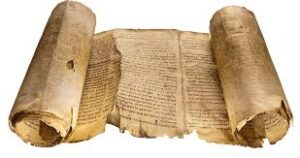 Found amongst the Qumran Cave Scrolls, the War Scroll mentions Kittim, often interpreted as a western or maritime military power. Some believe it refers to Rome, others to the current or futurist globalist systems at odds with divine alignment. When taken alongside the prophecies of Ezekiel, the Book of Revelations, Cayce, and perhaps even Nostradamus, a tapestry begins to reveal itself, one less about national borders and more about energetic strongholds, both in the past and present.
Found amongst the Qumran Cave Scrolls, the War Scroll mentions Kittim, often interpreted as a western or maritime military power. Some believe it refers to Rome, others to the current or futurist globalist systems at odds with divine alignment. When taken alongside the prophecies of Ezekiel, the Book of Revelations, Cayce, and perhaps even Nostradamus, a tapestry begins to reveal itself, one less about national borders and more about energetic strongholds, both in the past and present.
The spiritual and strategic gravity of the Middle East
The rising tensions between Israel and Iran cannot be ignored. These nations, central to the prophetic landscape, carry deep archetypal roles: Israel as the symbol of divine inheritance and spiritual covenant, and Iran, once ancient Persia, as a land of mysticism, empire, and resistance.
Today, their struggle reflects more than geopolitical posturing; it echoes the ancient battle between light and shadow, between revelation and control. Whether seen through Ezekiel’s prophecy or through modern intelligence briefings, this mounting tension may be the spark, or the smokescreen, for a much larger war foretold in scripture. Is the world being drawn into a final confrontation not just between nations, but between worldviews? And could the still point offer the only true exit from the spiral? I’ll explain the still point shortly.
In parallel to these tensions, discoveries beneath the Great Pyramid have reignited speculation about advanced technology left behind by an ancient race, possibly even predating dynastic Egypt. Some hint of energy devices, star maps, and chambers designed not as tombs, but as tuning forks for the soul. Ascension chambers?
If true, these revelations may indicate that beings once considered gods, or god-like, were not myth, but a memory. And what if they never left? Many believe they remain underground or in interdimensional stasis, waiting for a resonance match with human consciousness before they can awaken again.
Researching these prophecies opened an unexpected door. The symbolism of Gog and Magog wasn’t just geopolitical; it was archetypal. And the deeper we looked, the more we saw that what appeared to be external battles were also internal ones, reflected not only in nations, but in the divided nature of our human consciousness.
This led to a profound question: what if the name “Israel” was never just about territory, but about alignment? What if the war is not just over land—but over light, and how we wield it?
The name “Israel” has a rich meaning and etymology rooted in Hebrew. It means “one who struggles with God”, a reference to the biblical story of Jacob, who wrestled with an angel and was renamed Israel after the encounter.
In another definition from the occult/mystical view, IS-RA-EL can be interpreted as:
Isis (feminine magic) + Ra (masculine light of the Sun) + El (divine being)
A synthesis of cosmic forces within the soul and the nation-state.
 It echoes the idea of sacred union—not just of gender, but of polarities made whole. It’s the Merkabah encoded in language: body, mind, and spirit in divine alignment.
It echoes the idea of sacred union—not just of gender, but of polarities made whole. It’s the Merkabah encoded in language: body, mind, and spirit in divine alignment.
For Jacob, this wasn’t merely a personal transformation—it was an archetypal one. To be named Israel is to live with the divine tension, the soul’s struggle to align with a higher will. In many ways, the nation of Israel continues to live out this very meaning today, wrestling with the weight of prophecy, the burdens of survival, and its role as a focal point in humanity’s spiritual narrative.
The struggle with God may not be over—but perhaps that’s the point. For it is in the struggle that refinement occurs, and in the tension that transformation takes root. And where, like Jacob, we are finally blessed.
The Legacy of Names: Archetypes in Flesh and Myth
The story of Isaac and Ishmael, often framed as a division, ends with unity. Despite the early separation and perceived rivalry, the two brothers reunite to bury their father Abraham (Genesis 25:9). This quiet reconciliation offers a spiritual key to the modern Middle East, where echoes of their story still resound in the tension between Israel and the Arab world. Perhaps, just as the biblical brothers found peace at their father’s resting place, the modern descendants of both lineages may one day find unity in shared origin and divine purpose.
The significance of names in scripture often reveals deeper truths. For instance, Ishmael means “God hears”, derived from the Hebrew Yishma’el—”Yishma” meaning “to hear,” and “El” meaning “God.” Ishmael, the son of Abraham and Hagar, is traditionally considered the father of the Arab peoples. On the other hand, Isaac, the son of Abraham and Sarah, means “he will laugh” or “laughter,” a reference to the incredulous joy his parents felt upon learning they would bear a child in old age. These names do more than label individuals—they encode emotional, prophetic, and spiritual layers into the identity of entire peoples.
Were Isaac and Ishmael ever real people, or were they real ideas clothed in flesh and myth? Perhaps these stories were never meant to be taken only as linear history, but as symbols—living codes to help humanity navigate cycles of division and reconciliation. Like Cain and Abel, like Enki and Enlil, the brothers are not just brothers—they are aspects of the self, of nations, of archetypal consciousness. Their conflict reflects mankind’s internal struggle between ego and empathy, control and communion.
Celestial Scripts: Persia, Prophets, and the Zodiac
From this thread, our inquiry into scripture, prophecy, and polarity, emerged a deeper insight; not one centered in fear, but a need for balance. And it’s here that the stars begin to speak.
Throughout history, conflict and reconciliation are the echoes that shape myth, religion, and empire. But what if these cycles weren’t just human patterns—but reflections of celestial mechanics? As astrologers have long understood, the heavens influence the unfoldment of human events, and nowhere is this more vividly symbolized than in the sacred architecture of ancient civilizations. The pyramids, ziggurats, The zodiac on the ceiling of Dendera, and other temples of the ancient world, were more than burial sites or places of worship—they were cosmic instruments, aligned to the stars, marking solstices, equinoxes, and planetary ages.
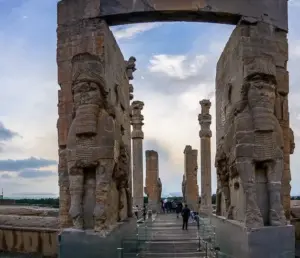
One of the most revered centers of this astrological knowledge was ancient Persia, which is modern-day Iran. The famed Magi, those who followed the star of Bethlehem, are widely believed to have been Zoroastrian astrologers.
Persian priests and astronomers possessed detailed star charts, and their teachings often revolved around a cosmic dualism, light and dark, Ahura Mazda and Angra Mainyu. This is not unlike the very themes embedded in the Book of Revelation or the War Scrolls.
The Zodiac of Dendera and other celestial carvings from this region suggest a worldview where divine cycles governed earthly events. Iran, then, is not merely a geopolitical hotspot. It is a living archive of celestial wisdom.
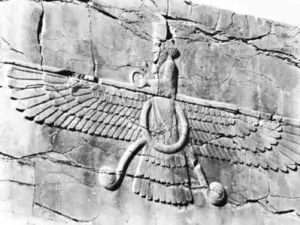
Is it any wonder, then, that so many of today’s tensions converge around this land? What if, like Ishmael, Iran has been cast as an outsider, yet carries the flame of forgotten wisdom that could help heal the schism? Perhaps the true war is not for territory—but for memory. For remembrance of a time when heaven and earth moved in harmony.
Mediapersia: An Ancient Echo
In a playful twist of etymological synchronicity, we might consider Media, not only the ancient region in modern-day Iran once central to astrological and prophetic knowledge, but also today’s digital “media,” a battleground of perception, projection, and manipulation. The Medes, after all, were interpreters of celestial signs. Today’s media interprets signs of a different sort—but who, or what, do they serve?
In both ages, Media has shaped empires.
The Living Example: Jesus and the Path to the Still Point
Jesus of Nazareth was a living embodiment of the Still Point. He didn’t react from emotion or political pressure; he responded from a higher awareness rooted in the Divine. Whether facing the Pharisees or forgiving those who crucified him, Jesus held the stillness of God in the midst of chaos. He demonstrated that when we remain centered—anchored in love, compassion, and forgiveness—we can transmute even the darkest circumstances.
In the Gospel of Matthew 5:44, he taught, “Love your enemies and pray for those who persecute you.” This wasn’t just a moral directive, it was a cosmic reorientation. To love in the face of hate, to forgive in the face of betrayal, is to realign with the greater field of unity. Jesus showed us that the still point is not a place of passivity. It’s a place of power.
The Yin-Yang of Prophecy and Peace
In Taoist tradition, the symbol of Yin and Yang contains a dot of its opposite within each half—showing that within every darkness there is a seed of light, and within every light, a shadow. The outer circle suggests a wholeness—an eternal cycle. They don’t generally show what’s hidden in the middle of the struggle of dark and light.
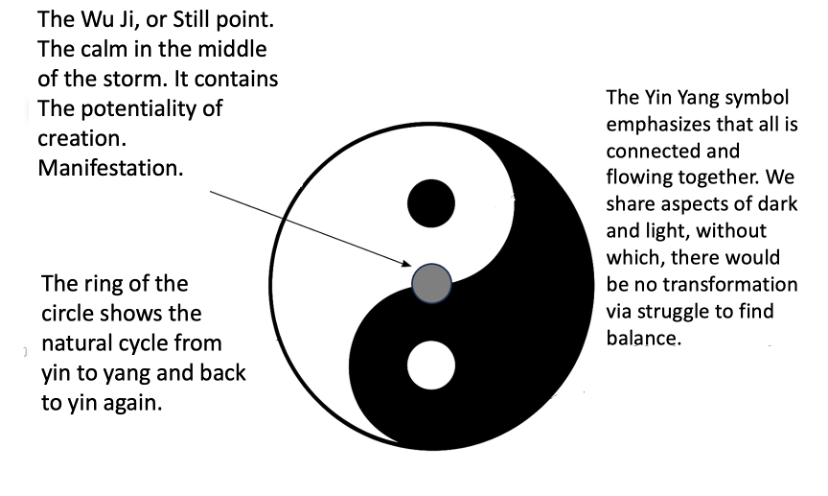
When applied to the teachings of prophecy, this symbolism reminds us that even in times of war and tribulation, the potential for peace and transformation exists. The still point, or Wu Ji, is the center of that cycle—the calm eye in the storm of opposites. Jesus stood at that center. And so can we.
Whether one is Christian, Jewish, Muslim, Buddhist, Zoroastrian, or spiritually sovereign—the message is the same: peace is not the absence of struggle, but the presence of balance. It is found in the still point. And that point lives within the human heart.
A Call to Remember
Let us return, not to war, but to the wisdom of balance. Let’s remember the stories of old as keys to unity rather than division. Like Jacob, let’s wrestle, not to defeat, but to be blessed. Let’s view the names of our ancestors as archetypes, lessons to embrace, and as bridges to the higher realms (as above, so below…and within).
Let’s take a moment to sit, in that still point.
Let’s experience prophecy as a path to peace.
War will end when we all realize, we are all One.
![]()
Sources & References
To support those unfamiliar with the biblical and prophetic texts referenced in this piece, the following sources include direct links and brief descriptions:
- Ezekiel 38–39 (Bible Gateway) – These chapters describe the prophecy of Gog and Magog, where a coalition led by a northern power invades Israel, only to be defeated by divine intervention.
- Revelation 20:7–9 (Bible Gateway) – Refers to the return of Gog and Magog at the end of the millennial reign, culminating in a final battle against the “camp of the saints.”
- Genesis 10:2 (Bible Gateway) – Lists Magog as a son of Japheth, establishing the tribal and geographic origin connected to later prophetic figures.
- Edgar Cayce Prophecies – Cayce predicted a redemptive role for Russia, calling it the “hope of the world” through its spiritual development.
- Nostradamus, Century VI – PDF – This section of Nostradamus’ quatrains includes the famous “King of Terror” reference, often tied to Eurasian prophecy and aerial warfare.
- The War Scroll (Dead Sea Scrolls Translation) – Mentions Kittim, often interpreted as a future military power or Rome, playing a key role in apocalyptic confrontations between the Sons of Light and Darkness. For broader context and interpretation, see the Wikipedia page on the War Scroll, which explores the symbolism and structure of the battles described.
- Ahura Mazda and Angra Mainyu – See also Ahriman
- Ancient Pyramid Technology – Independent researchers and whistleblowers have reported discoveries of hidden chambers and anomalous devices beneath the Great Pyramid. While not formally published in academic literature, these claims are widely discussed in books and documentaries such as The Revelation of the Pyramids and the work of explorers like Christopher Dunn and Antoine Gigal.
Disclaimer: We at Prepare for Change (PFC) bring you information that is not offered by the mainstream news, and therefore may seem controversial. The opinions, views, statements, and/or information we present are not necessarily promoted, endorsed, espoused, or agreed to by Prepare for Change, its leadership Council, members, those who work with PFC, or those who read its content. However, they are hopefully provocative. Please use discernment! Use logical thinking, your own intuition and your own connection with Source, Spirit and Natural Laws to help you determine what is true and what is not. By sharing information and seeding dialogue, it is our goal to raise consciousness and awareness of higher truths to free us from enslavement of the matrix in this material realm.
 EN
EN FR
FR



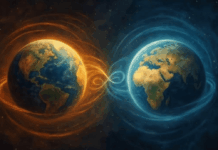

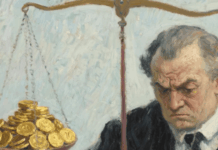
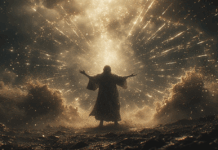
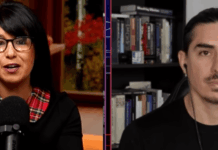


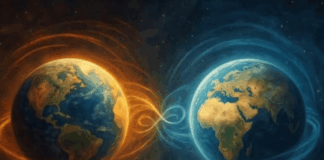
















What i think youre missing is that the knucklehead claimingbto be God the original is clearly not them ifbthey were why claim to be,if this is true all that you are refrecing from is then turned sideways whos who and which side is which side kinda narative
If I understand what you're trying to say here, those claiming to be god/God, may not have claimed it at all. Their technology probably led the people to assume they were. If I'm not quite understanding what you're saying, please try rephrasing your statement.